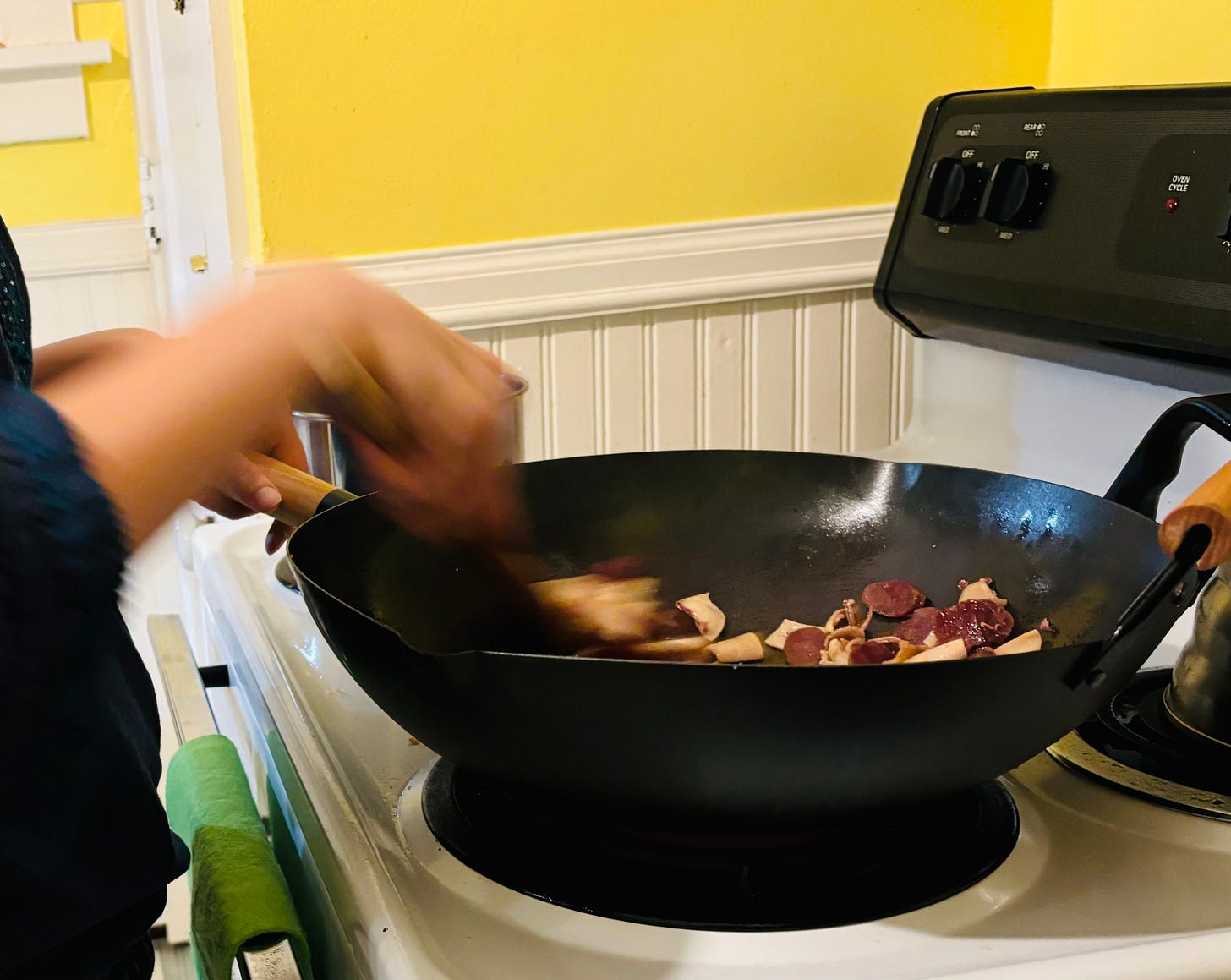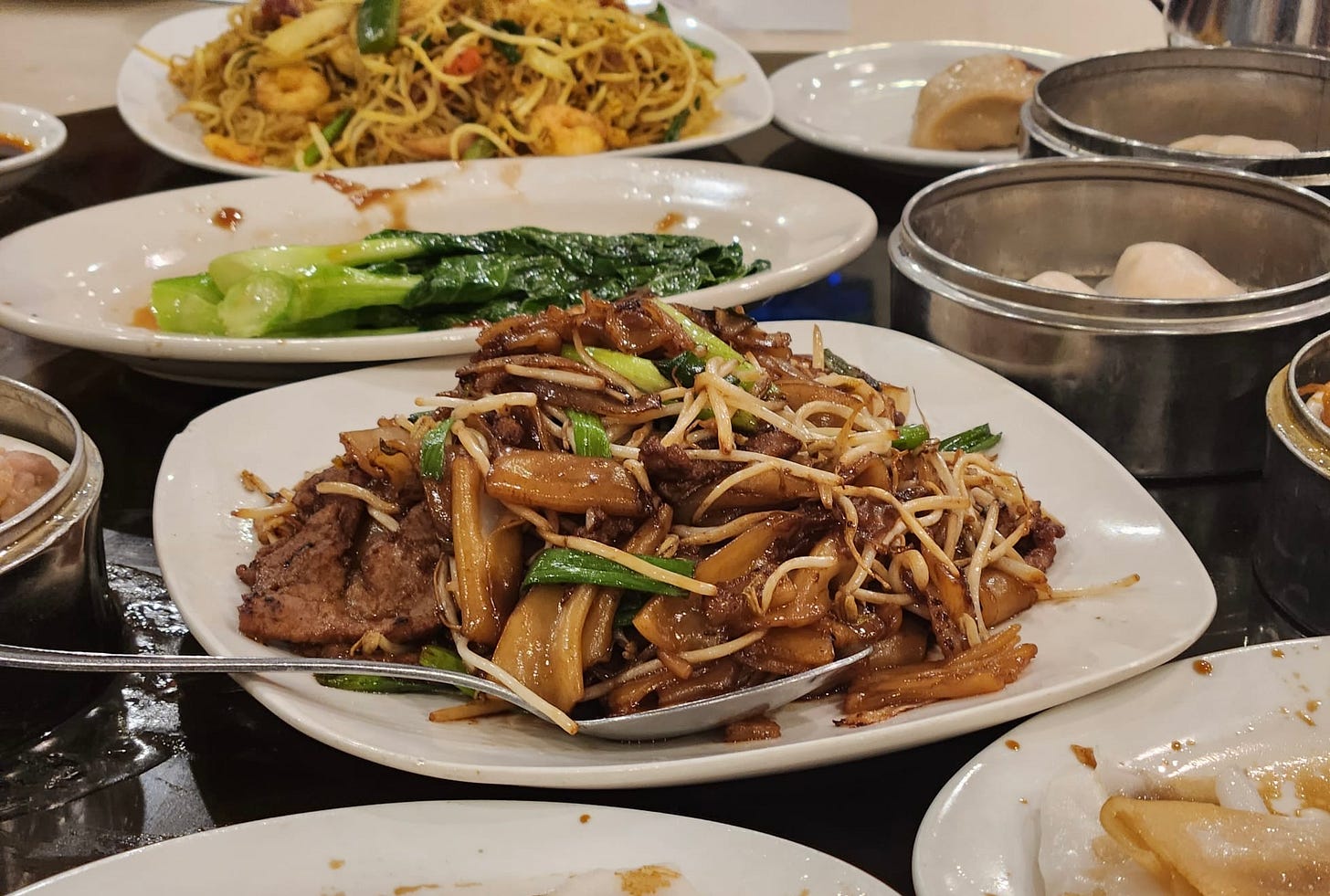One of my lifelong goals is to be an expert in Chinese cooking techniques, and dry frying is an essential technique that took me years to do proficiently and may take me many more to master. Growing up, I heard different terms for dry frying tossed around like gon1 zin1 (干煎) and gon1 chau1 (干炒) but didn’t realize they were connected until I was an adult. We only use one word in English for dry frying, but the way I see it, it’s an umbrella term that encompasses many different Chinese methods of using a small or moderate amount of neutral oil to fry ingredients without any marinade and before introducing any sauce — hence, the ingredients go in “dry." Dry frying uses significantly less oil than deep frying and can transform a dish’s texture or even imbue it with wok hei. Over time, I hope to provide you many recipes that allow you to practice each of these techniques.
I’ve discovered that where the following methods of dry frying differ is in how much you are moving the ingredients in the pan and the temperature of the oil. I don’t know about you, but this was kind of a revelation to me — most cooking classes in the U.S. teach you about how time and heat affects the ultimate texture of a dish, but I don’t find that movement is usually incorporated into the equation.
In order of least movement to most movement:
Gon1 zin1, 干煎
This is closest to what you’d picture as a classic shallow frying technique. This is usually used for proteins, as in perhaps the most famous example, fried flounder (gon1 zin1 lung4 lei6, 干煎龍利). The only time you should move the ingredients is to flip them over to any sides that haven’t yet been seared. The goal is to develop a light, golden crust on all sides of the protein using medium heat. This crust also makes it less likely for these ingredients to stick to the pan if you stir fry them in a sauce after dry frying. Try this out with my soft-shell crab recipe.
Gon1 bin1, 干煸
This kind of Sichuan-style dry frying uses more oil than the gon1 zin1 method and results in proteins with a nice chewiness and bounciness and vegetables with a nice bite to them rather than crispiness. Dry-fried green beans (gon1 bin1 sei3 gwai3 dau2, 干煸四季豆) is probably the most popular dish that employs this method. Serious Eats has an in-depth guide to this kind of dry frying. As they suggest, you want to keep the ingredients moving throughout the cooking process with medium-high heat, just enough to make sure they cook evenly.
Gon1 caau2, 干炒
This method is great for imbuing a dish with mouthwatering wok hei. It requires moving ingredients around the wok at a speed greater than gon1 zin1 and gon1 bin1 because very high temperatures are usually necessary to get wok hei. You want to move ingredients quickly so they don’t burn. In fact, some of the traditional dai pai dongs in Hong Kong use kerosene stoves to get the woks screaming hot for dishes that require you to gon1 caau2. The most iconic dish that uses this technique is the cha chaan teng classic, beef chow fun (gon1 caau2 ngau4 ho4, 干炒牛河).
It’s very possible there are more kinds of dry frying in Chinese cuisine because there is so much culinary diversity in China and the diaspora — please let me know if I’m leaving anything out or getting anything wrong in the comments. Until next time!







This was so interesting! Never thought about cooking also in terms of movement (almost like a sixth sense unearthed). It also reminded me of a recent NYT Cooking Article about finding authentic wok hei in Hong Kong!
everything looks delicious! It's all too technical for me to ever try making, but I love reading about it. I will have L try this. :).